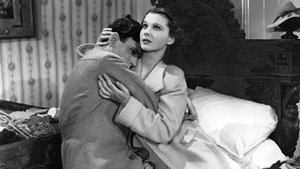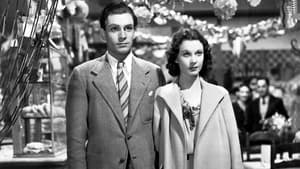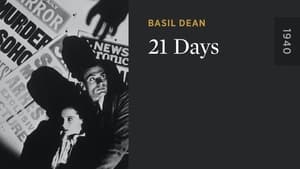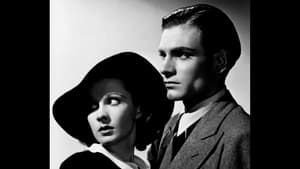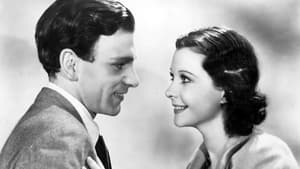Contact: info@alwanfilm.com
Video Sources 0 Views

Synopsis
21 Days Together 1940 Colorized Review: A Tale of Love, Morality, and Consequences

Introduction
21 Days Together (1940), also known as 21 Days, is a captivating British drama that delves into the complexities of love, morality, and fate. Directed by Basil Dean and starring the legendary Laurence Olivier and Vivien Leigh, the film weaves a story about passion, justice, and the inevitable consequences of one’s actions. Set against the backdrop of pre-war Britain, 21 Days Together is a compelling examination of human nature and the moral dilemmas that arise when love and justice collide. In this review, we will explore the film’s narrative, performances, and its thematic significance, while also discussing the impact of this cinematic gem on British filmmaking of the era.
Check The Full Colorized Movies List
Check Our Colorized Movies Trailer Channel
Understanding 21 Days Together 1940 Colorized: Director, Cast, and Genre
Director’s Vision
Basil Dean, the director of 21 Days Together, was a significant figure in British cinema during the early 20th century. Known for his ability to draw out nuanced performances from his actors, Dean had a keen eye for emotional depth and narrative pacing. In 21 Days Together, he crafts a tense, morally charged drama that explores the interplay of personal desires and societal expectations. Dean’s direction is characterized by its sharp focus on character development and its exploration of ethical dilemmas, making the film a thoughtful and engaging experience.
The Iconic Performance of Actors
The film’s power lies in the incredible performances of its two lead actors, Laurence Olivier and Vivien Leigh. Olivier, one of the greatest actors of his generation, portrays Larry Durrant, a man caught in a web of moral ambiguity after accidentally killing a man in defense of his lover. His portrayal of a man torn between love and guilt is both haunting and compelling. Olivier captures the internal struggle of a man who, despite committing a crime, is driven by a desire to protect the woman he loves.
Vivien Leigh, Olivier’s real-life partner at the time, delivers an equally riveting performance as Wanda, Larry’s lover. Leigh’s Wanda is vulnerable yet determined, caught between her feelings for Larry and the fear of losing him. Leigh brings a quiet intensity to the role, and her chemistry with Olivier is electric, making their scenes together deeply emotional and convincing.
The supporting cast, which includes Leslie Banks as Keith Durrant, Larry’s brother and a barrister, adds further complexity to the story. Keith’s internal conflict between his duty as a lawyer and his loyalty to his brother forms another layer of tension in the film, highlighting the intricate moral landscape that 21 Days Together explores.
Exploring the Genre
21 Days Together falls into the category of crime drama, with strong elements of romance and moral exploration. The film presents a classic noir-like premise, where characters are faced with difficult choices that test their ethical boundaries. However, unlike many noir films of the time, 21 Days Together does not focus on crime for the sake of action but instead uses the crime as a catalyst for exploring human emotions and moral quandaries. This blend of romance, drama, and moral conflict makes the film a unique entry in its genre, one that prioritizes character over plot and introspection over action.
Exploring the World of 21 Days Together 1940 Colorized: Plot and Characters
Detailed Synopsis
21 Days Together (1940) tells the story of Larry Durrant (Laurence Olivier), a man who accidentally kills a man named Henry Wallen in defense of his lover, Wanda (Vivien Leigh). Henry, Wanda’s estranged husband, arrives at her apartment with malicious intent, and in the ensuing struggle, Larry kills him. In a panic, Larry and Wanda hide the body, but soon the weight of the crime begins to bear down on them.
Larry is faced with an impossible decision: should he confess to the crime and face the consequences, or remain silent and let an innocent man, a vagrant arrested by the police for the murder, take the fall? With only 21 days before the vagrant’s trial, Larry must wrestle with his conscience and decide whether to reveal the truth or keep his secret to protect Wanda and their future together.
The film explores the emotional and psychological turmoil that both Larry and Wanda experience as they grapple with the consequences of the crime. Meanwhile, Larry’s brother Keith (Leslie Banks), a barrister, unknowingly complicates matters by defending the vagrant, further intensifying Larry’s moral dilemma. The tension builds as the days tick down, leading to a dramatic and heart-wrenching conclusion.
Complex Protagonist and Memorable Supporting Characters
Larry Durrant is a complex protagonist, a man whose love for Wanda pushes him to make morally questionable decisions. Olivier’s portrayal of Larry is both sympathetic and tragic, as he conveys the anguish of a man caught between doing what is right and protecting the woman he loves. Larry’s inner conflict is the driving force of the narrative, and his eventual decision reveals the deep moral questions at the heart of the story.
Wanda is another richly developed character. While she initially appears fragile and dependent on Larry, her determination to stand by him and her willingness to share the burden of guilt give her depth and agency. Vivien Leigh’s performance imbues Wanda with a quiet strength, making her a compelling and empathetic character.
The supporting cast, particularly Leslie Banks as Keith Durrant, provides further emotional and narrative complexity. Keith’s role as both Larry’s brother and the lawyer defending the innocent vagrant adds layers of irony and tension to the plot, as his actions unknowingly push Larry closer to making a final, irrevocable decision.
The Art of Film Colorization
Understanding the Process
While 21 Days Together was not colorized, it is important to discuss how colorization plays a role in bringing older black-and-white films to contemporary audiences. The process of film colorization involves adding color to original black-and-white footage, typically through digital techniques that allow for accurate and nuanced coloring. Though this film has remained in its original black-and-white format, the hypothetical colorization of such a film could enhance its visual storytelling by emphasizing emotions, settings, and atmosphere through the strategic use of color.
Films like 21 Days Together often rely heavily on shadows, contrast, and lighting to convey mood and tone, which might be affected by the addition of color. The stark black-and-white cinematography helps to enhance the moral ambiguities and inner struggles of the characters. Adding color to this film would raise interesting questions about how the film’s tone and mood might change with the use of color palettes to emphasize different emotional beats.
Development Over Time
The colorization of black-and-white films became more common in the late 20th century, with advances in digital technology allowing for more accurate and detailed work. While colorization has been used to attract new audiences to classic films, it has also sparked debate among purists who believe that the original black-and-white cinematography was a deliberate artistic choice that should be preserved.
Early Black-and-White Films: A Brief History
The Importance of Black-and-White Cinematography
In the early days of cinema, black-and-white films dominated the industry, not just because of technological limitations, but also because filmmakers learned to use light and shadow to tell their stories in visually compelling ways. Black-and-white cinematography often required directors and cinematographers to focus more on composition, texture, and contrast to create mood and atmosphere.
In films like 21 Days Together, the use of shadows and light is critical in portraying the film’s moral undertones. The stark contrast between light and dark in key scenes visually mirrors Larry’s internal conflict, making the black-and-white format an essential part of the film’s storytelling.
21 Days Together and Its Black-and-White Visuals
The Role of Visuals in Enhancing the Narrative
The black-and-white cinematography of 21 Days Together plays an essential role in the film’s emotional and moral landscape. The visual style emphasizes the film’s noir-like qualities, using shadows and contrasts to enhance the mood of suspense and moral uncertainty. The use of light and dark reflects Larry’s inner turmoil, as he grapples with the consequences of his actions.
The absence of color in the film allows the audience to focus more on the characters and their emotional journeys. The stark visuals emphasize the bleakness of Larry’s situation, underscoring the sense of inevitability that pervades the film.
The Debate Over Film Colorization
The Pros and Cons of Colorization
While some filmmakers and audiences appreciate the modern technology that allows for the colorization of classic films, others argue that such efforts can detract from the original artistic vision. In the case of 21 Days Together, colorizing the film might detract from its noir atmosphere, which relies heavily on its black-and-white aesthetic to convey themes of moral ambiguity.
On the other hand, proponents of colorization argue that it can make classic films more accessible to modern audiences who may be less accustomed to black-and-white cinematography. Colorization can also highlight visual details that might be missed in black-and-white films, offering a new perspective on familiar stories.
Influence and Legacy: 21 Days Together 1940 Colorized’s Impact on Cinema
The Influence of 21 Days Together on British Cinema
21 Days Together (1940) had a significant impact on British cinema, particularly in its exploration of complex moral dilemmas and its focus on character-driven narratives. The film’s emphasis on internal conflict and ethical choices set it apart from many contemporary dramas of the time, which often prioritized action over introspection.
The film’s success also helped solidify Laurence Olivier and Vivien Leigh as two of the most prominent actors of their generation. Their performances in 21 Days Together showcased their range and talent, and both actors would go on to achieve even greater success in the years to come.
Director’s Cinematic Legacy: Beyond 21 Days Together 1940 Colorized
Basil Dean’s Influence on British Filmmaking
Basil Dean’s work on 21 Days Together is emblematic of his larger contributions to British cinema. Known for his ability to blend emotional depth with sharp storytelling, Dean left a lasting mark on the industry. His focus on character development and moral complexity in films like 21 Days Together paved the way for future British filmmakers who sought to explore similar themes in their work.
Dean’s legacy extends beyond his directorial achievements, as he was also a pioneer in the British film industry, helping to establish key institutions and promoting the development of British cinema on the global stage.
Themes Explored in 21 Days Together 1940 Colorized
Love, Guilt, and Moral Dilemmas
At its core, 21 Days Together is a film about love and the lengths to which people will go to protect those they care about. The film explores the ethical dilemmas that arise when love conflicts with justice, and the consequences of choosing personal desires over moral duty.
Larry’s love for Wanda drives him to commit a crime and then grapple with the guilt of his actions. The film raises questions about whether love can justify wrongdoing and whether there is ever a clear right or wrong in matters of the heart. These themes of love, guilt, and moral ambiguity give the film its emotional depth and timeless relevance.
Reception and Controversy Surrounding 21 Days Together 1940 Colorized
Critical Reception
Upon its release, 21 Days Together received praise for its gripping narrative and the strong performances of its lead actors. Critics lauded Olivier and Leigh for their emotionally charged portrayals of Larry and Wanda, with particular attention given to their on-screen chemistry. The film’s exploration of moral dilemmas and its tense, suspenseful atmosphere were also highlighted as key strengths.
However, some critics took issue with the film’s pacing, arguing that it occasionally slowed down during more introspective moments. Despite this, 21 Days Together was generally well-received by both audiences and critics alike.
Where to Watch 21 Days Together 1940 Colorized Online
For modern audiences looking to experience 21 Days Together, the film is available on a variety of streaming platforms. It can be found on Turner Classic Movies and other services that specialize in classic films. Additionally, physical copies of the film are available on DVD and Blu-ray for those who prefer a more tangible collection of classic cinema.
FAQs About 21 Days Together 1940 Colorized
Q: What is the significance of the title 21 Days Together?
A: The title refers to the 21 days that Larry Durrant has to decide whether to confess his crime or remain silent and let an innocent man take the blame. It symbolizes the limited time he has to make a life-changing decision.
Q: Is 21 Days Together based on a book?
A: Yes, the film is based on the play The First and the Last by John Galsworthy, which was adapted for the screen by Graham Greene.
Q: How does 21 Days Together compare to other films starring Laurence Olivier and Vivien Leigh?
A: 21 Days Together is unique in that it pairs Olivier and Leigh in a deeply personal, intimate story that focuses on moral dilemmas, whereas other films starring the duo, such as That Hamilton Woman, often involve grand historical settings.
Conclusion
21 Days Together (1940) stands as a classic of British cinema, notable for its exploration of love, morality, and the consequences of human actions. Directed by Basil Dean and featuring unforgettable performances from Laurence Olivier and Vivien Leigh, the film remains a poignant examination of the choices we make in the name of love and justice. Its black-and-white cinematography enhances the mood of moral ambiguity, and its themes continue to resonate with audiences today. Whether you’re drawn to the film’s romantic elements, its suspenseful narrative, or its moral complexity, 21 Days Together offers a compelling cinematic experience that remains relevant more than 80 years after its release.
